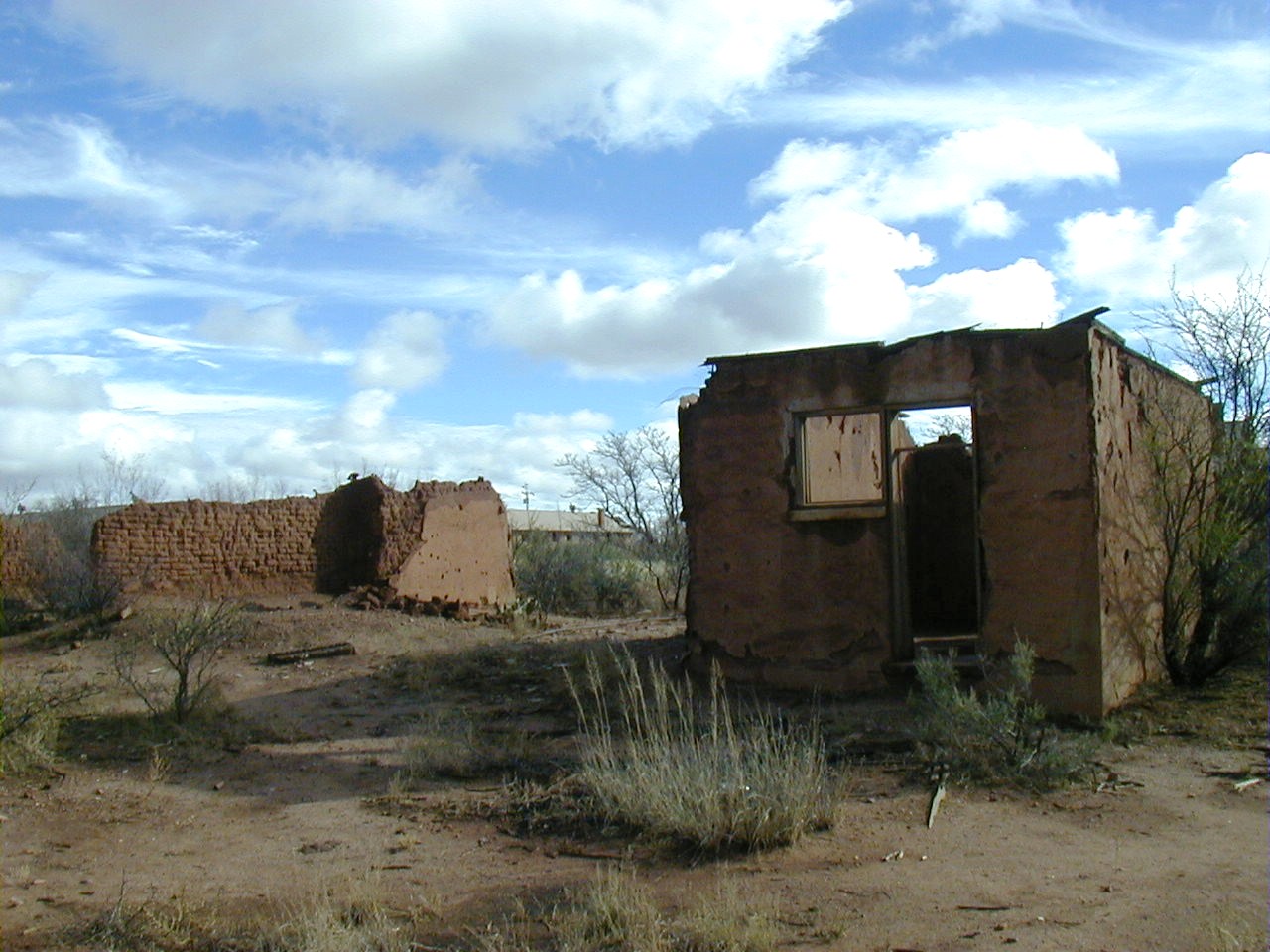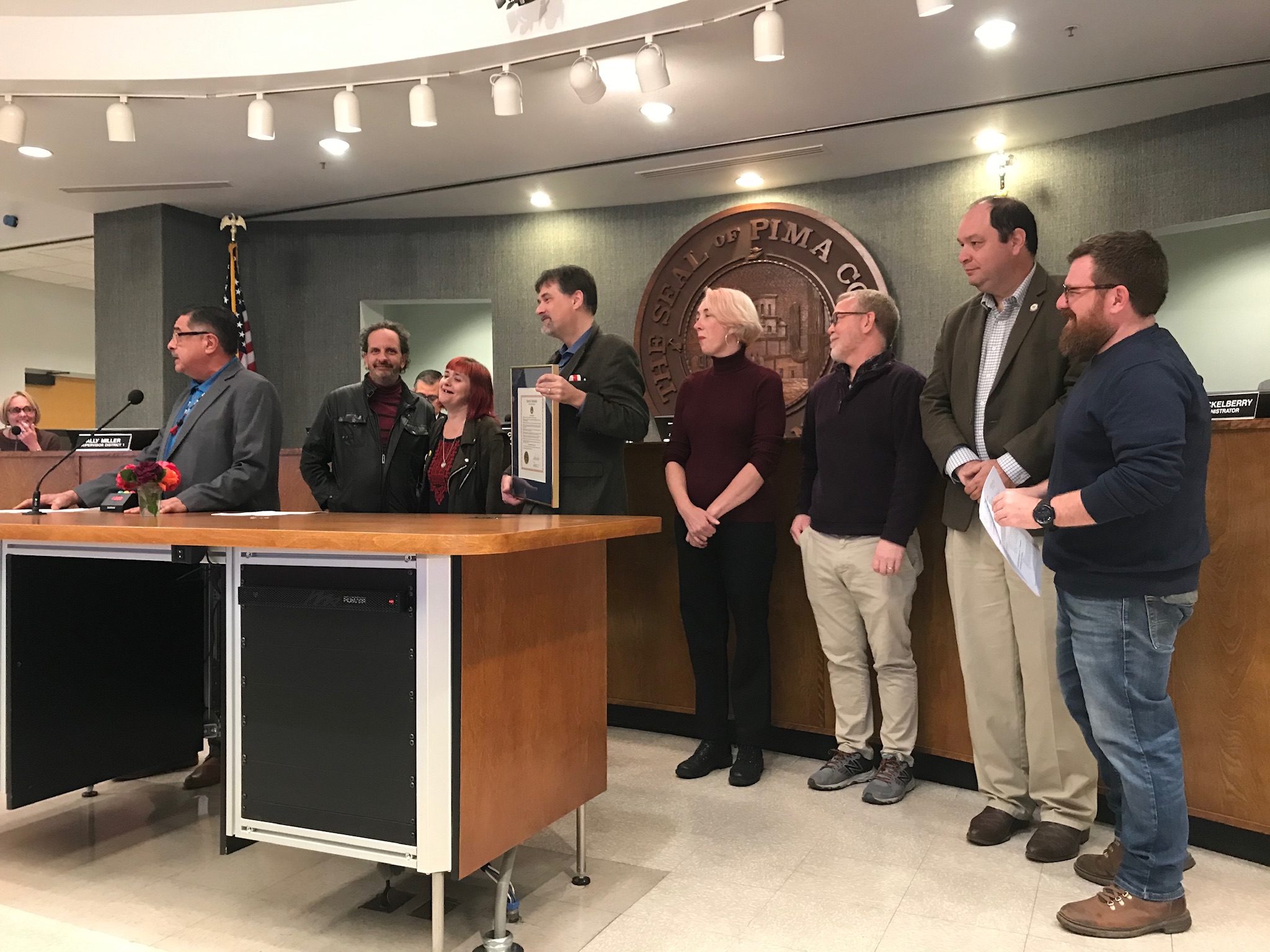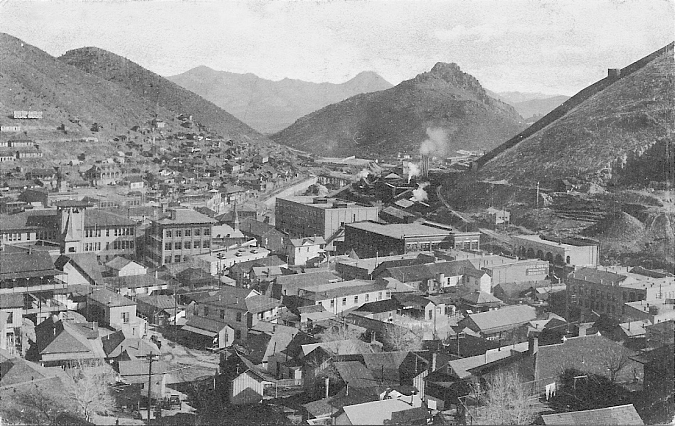|
Fort Newell
Fort Naco, Camp Naco, or Fort Newell began as a camp in the Southwest United States, on the outskirts of Naco, Arizona as part of the Mexican Border Project. Over time adobe and wooden buildings were constructed to house the garrison along with other permanent structures. History Fort Naco, others call it Camp Naco or Fort Newell, was one of the last forts built by the United States in continental territory and is the only remaining border fort out of several that were constructed during the Mexican Revolution. Soldiers were first stationed in Naco in November 1910 and remained in the community due to continued fighting across the border, including the Battle of Naco in 1913 and the later Siege of Naco in 1915 in Sonora. Subsequent to Pancho Villa’s attack on Columbus, New Mexico in 1916, Naco was a staging area for American troops protecting the border. Camp Naco was constructed in 1917 as part of the Mexican Border Project. It was the headquarters of the 1st Infantry Regi ... [...More Info...] [...Related Items...] OR: [Wikipedia] [Google] [Baidu] |
Naco, Arizona
Naco, a Census-Designated Place (CDP) located in Cochise County, Arizona, Cochise County, Arizona, United States had a recorded population of 1,046 during the United States Census, 2010, 2010 census. It is located directly across the United States–Mexico border from its sister city Naco, Sonora. Naco is best known for an accidental Bombing of Naco, 1929 air raid and is the first and only municipality in the Continental United States to have been Aerial bombing of cities, aerially bombed by foreigners. The present-day unincorporated town of Naco, Arizona, was established in the early 20th century. The area was originally settled by the Nahua and Opata people, Opata Indians. ''Naco'' means "nopal cactus" in the Opata language. The U.S. Congress officially established Naco as a Naco Arizona Port of Entry, Port of Entry on June 28, 1902. Today, the Naco Arizona Port of Entry, Naco port of entry is open 24 hours per day. Occasionally the people on both sides of the border use the ... [...More Info...] [...Related Items...] OR: [Wikipedia] [Google] [Baidu] |
Pancho Villa
Francisco "Pancho" Villa (,"Villa" ''Collins English Dictionary''. ; ; born José Doroteo Arango Arámbula, 5 June 1878 – 20 July 1923) was a general in the Mexican Revolution. He was a key figure in the revolutionary movement that forced out President Porfirio Díaz and brought Francisco I. Madero to power in 1911. When Madero was ousted by a coup led by General Victoriano Huerta in February 1913, he led anti-Huerta forces in the Constitutionalist Army 1913–14. The commander of the coalition was civilian governor of Coahuila Venustiano Carranza. After the defeat and exile of Huerta in July 1914, Villa broke with Carranza. Villa dominated the Convention of Aguascalientes, meeting of revolutionary generals that excluded Carranza and helped create a coalition government. Emiliano Zapata and Villa ... [...More Info...] [...Related Items...] OR: [Wikipedia] [Google] [Baidu] |
Forts In Arizona
A fortification is a military construction or building designed for the defense of territories in warfare, and is also used to establish rule in a region during peacetime. The term is derived from Latin ''fortis'' ("strong") and ''facere'' ("to make"). From very early history to modern times, defensive walls have often been necessary for cities to survive in an ever-changing world of invasion and conquest. Some settlements in the Indus Valley civilization were the first small cities to be fortified. In ancient Greece, large stone walls had been built in Mycenaean Greece, such as the ancient site of Mycenae (famous for the huge stone blocks of its 'cyclopean' walls). A Greek '' phrourion'' was a fortified collection of buildings used as a military garrison, and is the equivalent of the Roman castellum or English fortress. These constructions mainly served the purpose of a watch tower, to guard certain roads, passes, and borders. Though smaller than a real fortress, they acted ... [...More Info...] [...Related Items...] OR: [Wikipedia] [Google] [Baidu] |
Buildings And Structures In Cochise County, Arizona
A building, or edifice, is an enclosed structure with a roof and walls standing more or less permanently in one place, such as a house or factory (although there's also portable buildings). Buildings come in a variety of sizes, shapes, and functions, and have been adapted throughout history for a wide number of factors, from building materials available, to weather conditions, land prices, ground conditions, specific uses, prestige, and aesthetic reasons. To better understand the term ''building'' compare the list of nonbuilding structures. Buildings serve several societal needs – primarily as shelter from weather, security, living space, privacy, to store belongings, and to comfortably live and work. A building as a shelter represents a physical division of the human habitat (a place of comfort and safety) and the ''outside'' (a place that at times may be harsh and harmful). Ever since the first cave paintings, buildings have also become objects or canvasses of much artis ... [...More Info...] [...Related Items...] OR: [Wikipedia] [Google] [Baidu] |
Military Facilities In Arizona
A military, also known collectively as armed forces, is a heavily armed, highly organized force primarily intended for warfare. It is typically authorized and maintained by a sovereign state, with its members identifiable by their distinct military uniform. It may consist of one or more military branches such as an army, navy, air force, space force, marines, or coast guard. The main task of the military is usually defined as defence of the state and its interests against external armed threats. In broad usage, the terms ''armed forces'' and ''military'' are often treated as synonymous, although in technical usage a distinction is sometimes made in which a country's armed forces may include both its military and other paramilitary forces. There are various forms of irregular military forces, not belonging to a recognized state; though they share many attributes with regular military forces, they are less often referred to as simply ''military''. A nation's military may f ... [...More Info...] [...Related Items...] OR: [Wikipedia] [Google] [Baidu] |
Tucson Sentinel
The ''Tucson Sentinel'' is a nonprofit online newspaper in Tucson, founded in 2009 and began publishing full-time in January 2010, with a focus on Arizona and regional news. History The Sentinel was founded in 2009 after the shutdown in May 2009 of the Tucson Citizen, a 138-year-old afternoon daily newspaper that was closed by the Gannett Company newspaper chain. The founder of the nonprofit news site, Dylan Smith, had been the online editor for the Tucson Citizen. It began publishing full-time in January 2010, with an emphasis on local politics and public policy issues, including the border and immigration. The site was one of the initial wave of local independent online news sites to spring up around the country as daily newspapers endured layoffs and closures. The site is among hundreds of startup local news organizations across the country founded to fill the gaps left by declining print newsrooms. Smith was among the founders of the Local Independent Online News Publishers ... [...More Info...] [...Related Items...] OR: [Wikipedia] [Google] [Baidu] |
Bisbee, Arizona
Bisbee is a city in and the county seat of Cochise County in southeastern Arizona, United States. It is southeast of Tucson and north of the Mexican border. According to the 2020 census, the population of the town was 4,923, down from 5,575 in the 2010 census. History Bisbee was founded as a copper, gold, and silver mining town in 1880, and named in honor of Judge DeWitt Bisbee, one of the financial backers of the adjacent Copper Queen Mine. The town was the site of the Bisbee Riot in 1919. In 1929, the county seat was moved from Tombstone to Bisbee, where it remains. Mining industry Mining in the Mule Mountains proved quite successful: in the early 20th century the population of Bisbee soared. Incorporated in 1902, by 1910 its population had swelled to 9,019, and it sported a constellation of suburbs, including Warren, Lowell, and San Jose, some of which had been founded on their own (ultimately less successful) mines. In 1917, open-pit mining was successfully introd ... [...More Info...] [...Related Items...] OR: [Wikipedia] [Google] [Baidu] |
National Register Of Historic Places
The National Register of Historic Places (NRHP) is the United States federal government's official list of districts, sites, buildings, structures and objects deemed worthy of preservation for their historical significance or "great artistic value". A property listed in the National Register, or located within a National Register Historic District, may qualify for tax incentives derived from the total value of expenses incurred in preserving the property. The passage of the National Historic Preservation Act (NHPA) in 1966 established the National Register and the process for adding properties to it. Of the more than one and a half million properties on the National Register, 95,000 are listed individually. The remainder are contributing resources within historic districts. For most of its history, the National Register has been administered by the National Park Service (NPS), an agency within the U.S. Department of the Interior. Its goals are to help property owners and inte ... [...More Info...] [...Related Items...] OR: [Wikipedia] [Google] [Baidu] |
Huachuca City, Arizona
Huachuca City is a town in Cochise County, Arizona, United States. As of the 2010 census, the population was 1,853. Fort Huachuca, a U.S. Army base, is located just south of the municipality. History Huachuca City started out as a stop along the Southern Pacific Railroad. The rail stretched between Tombstone and Patagonia and is no longer in operation today. With the re-opening of Fort Huachuca in 1954, the area began to grow and the community went through several name changes: Campstone Station, Sunset City, and Huachuca Vista, before finally settling on the name Huachuca City. It incorporated in 1958. Today, Huachuca City is a small town located at the north exit of Fort Huachuca, the major employment for the town. With retirees moving in and tourism a major business because of the proximity to Tombstone and Kartchner Caverns State Park, Huachuca City is a growing area. Geography Huachuca City is located in southwestern Cochise County. The city of Sierra Vista and Fo ... [...More Info...] [...Related Items...] OR: [Wikipedia] [Google] [Baidu] |
Civilian Conservation Corps
The Civilian Conservation Corps (CCC) was a voluntary government work relief program that ran from 1933 to 1942 in the United States for unemployed, unmarried men ages 18–25 and eventually expanded to ages 17–28. The CCC was a major part of President Franklin D. Roosevelt's New Deal that supplied manual labor jobs related to the conservation and development of natural resources in rural lands owned by federal, state, and local governments. The CCC was designed to supply jobs for young men and to relieve families who had difficulty finding jobs during the Great Depression in the United States Robert Fechner was the first director of this agency, succeeded by James McEntee following Fechner's death. The largest enrollment at any one time was 300,000. Through the course of its nine years in operation, three million young men took part in the CCC, which provided them with shelter, clothing, and food, together with a wage of $30 (equivalent to $1000 in 2021) per month ($25 of ... [...More Info...] [...Related Items...] OR: [Wikipedia] [Google] [Baidu] |
Fort Newell
Fort Naco, Camp Naco, or Fort Newell began as a camp in the Southwest United States, on the outskirts of Naco, Arizona as part of the Mexican Border Project. Over time adobe and wooden buildings were constructed to house the garrison along with other permanent structures. History Fort Naco, others call it Camp Naco or Fort Newell, was one of the last forts built by the United States in continental territory and is the only remaining border fort out of several that were constructed during the Mexican Revolution. Soldiers were first stationed in Naco in November 1910 and remained in the community due to continued fighting across the border, including the Battle of Naco in 1913 and the later Siege of Naco in 1915 in Sonora. Subsequent to Pancho Villa’s attack on Columbus, New Mexico in 1916, Naco was a staging area for American troops protecting the border. Camp Naco was constructed in 1917 as part of the Mexican Border Project. It was the headquarters of the 1st Infantry Regi ... [...More Info...] [...Related Items...] OR: [Wikipedia] [Google] [Baidu] |
Columbus, New Mexico
Columbus is a village in Luna County, New Mexico, United States, about north of the Mexico–United States border, Mexican border. It is considered a place of historical interest, as the scene of Battle of Columbus (1916), a 1916 attack by Mexico, Mexican revolutionary leader Pancho Villa, Francisco "Pancho" Villa that caused America to send 10,000 troops there in the Mexican Expedition (originally referred to as the "punitive Mexican Expedition"). Columbus's population was 1,664 at the 2010 United States Census, 2010 census. History Early history (1891–1910s) Columbus was established in 1891 just across the Mexican border from Palomas, Chihuahua, and named after 15th-century explorer Christopher Columbus. In 1902, the village was moved north when the El Paso and Southwestern Railroad built its Columbus station. This station is now converted into a museum run by the Columbus Historical Society. About 1905, it was a very small town with a population of about 100, two of those ea ... [...More Info...] [...Related Items...] OR: [Wikipedia] [Google] [Baidu] |








